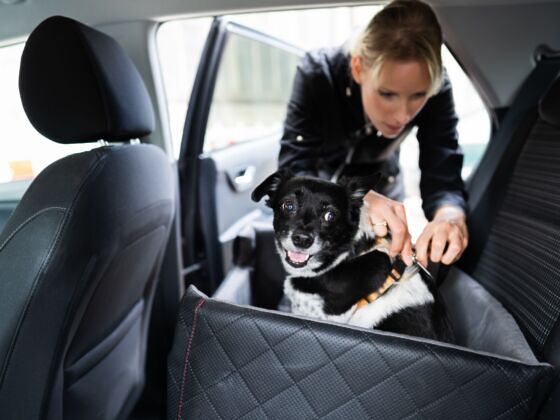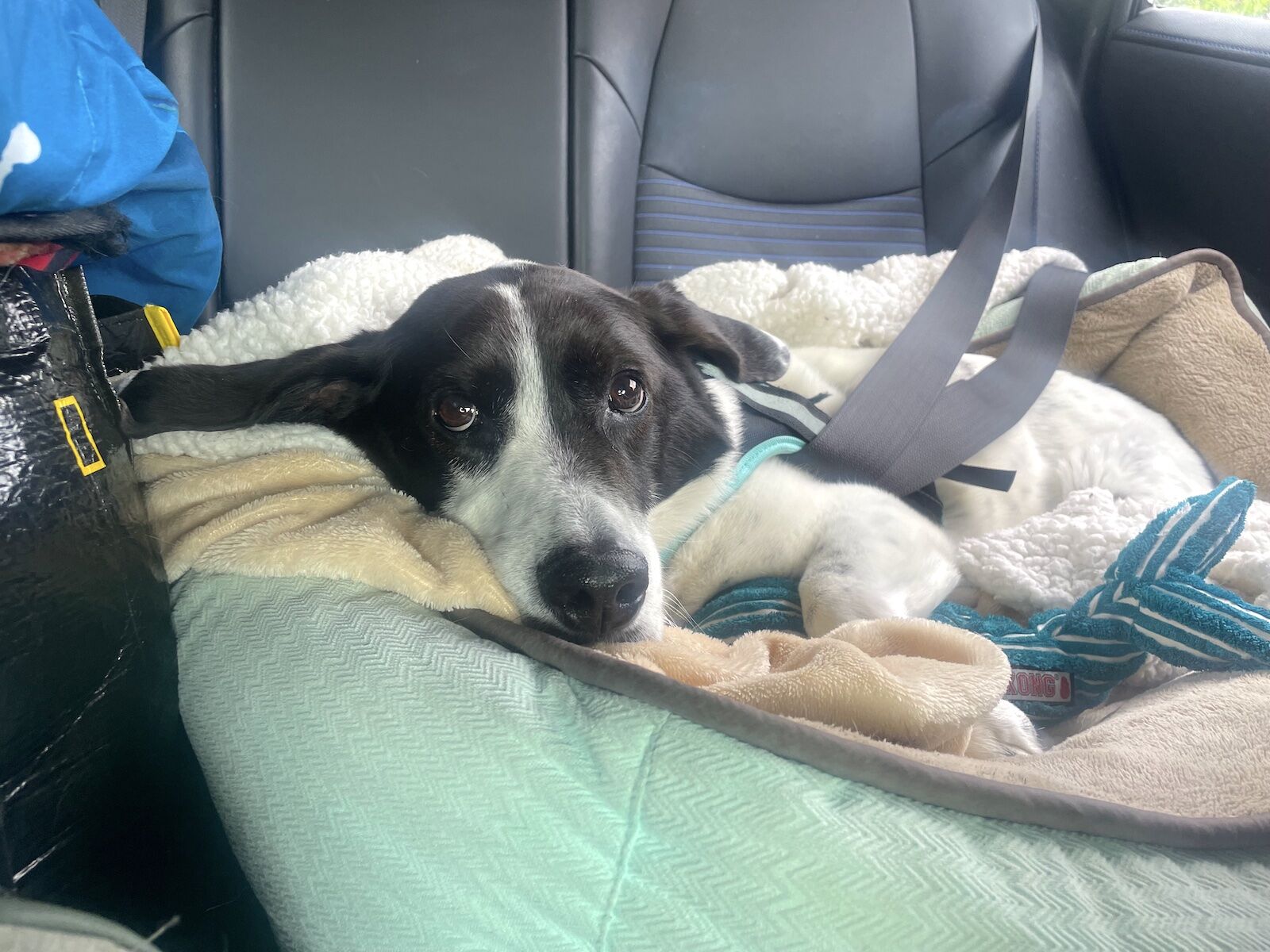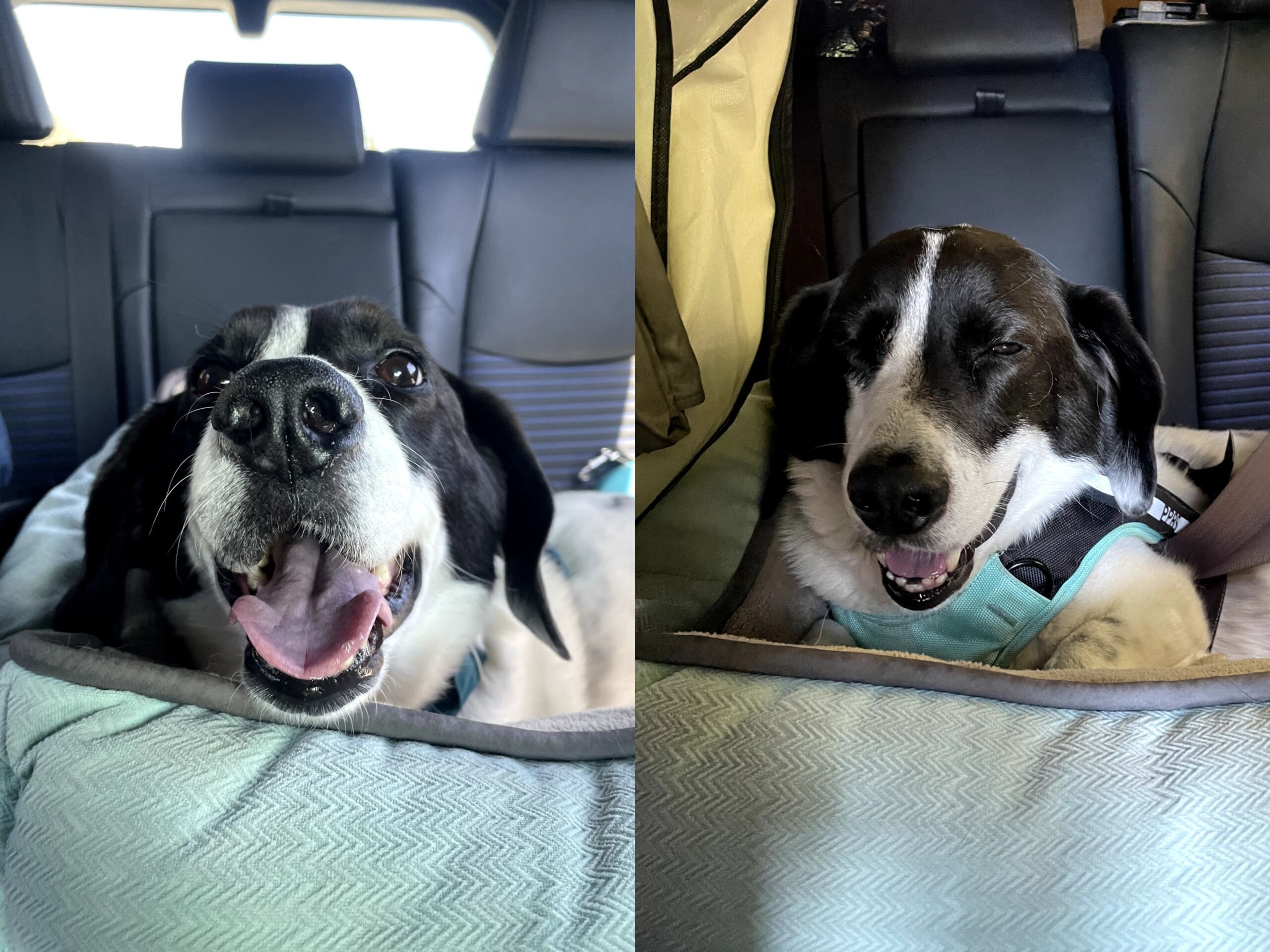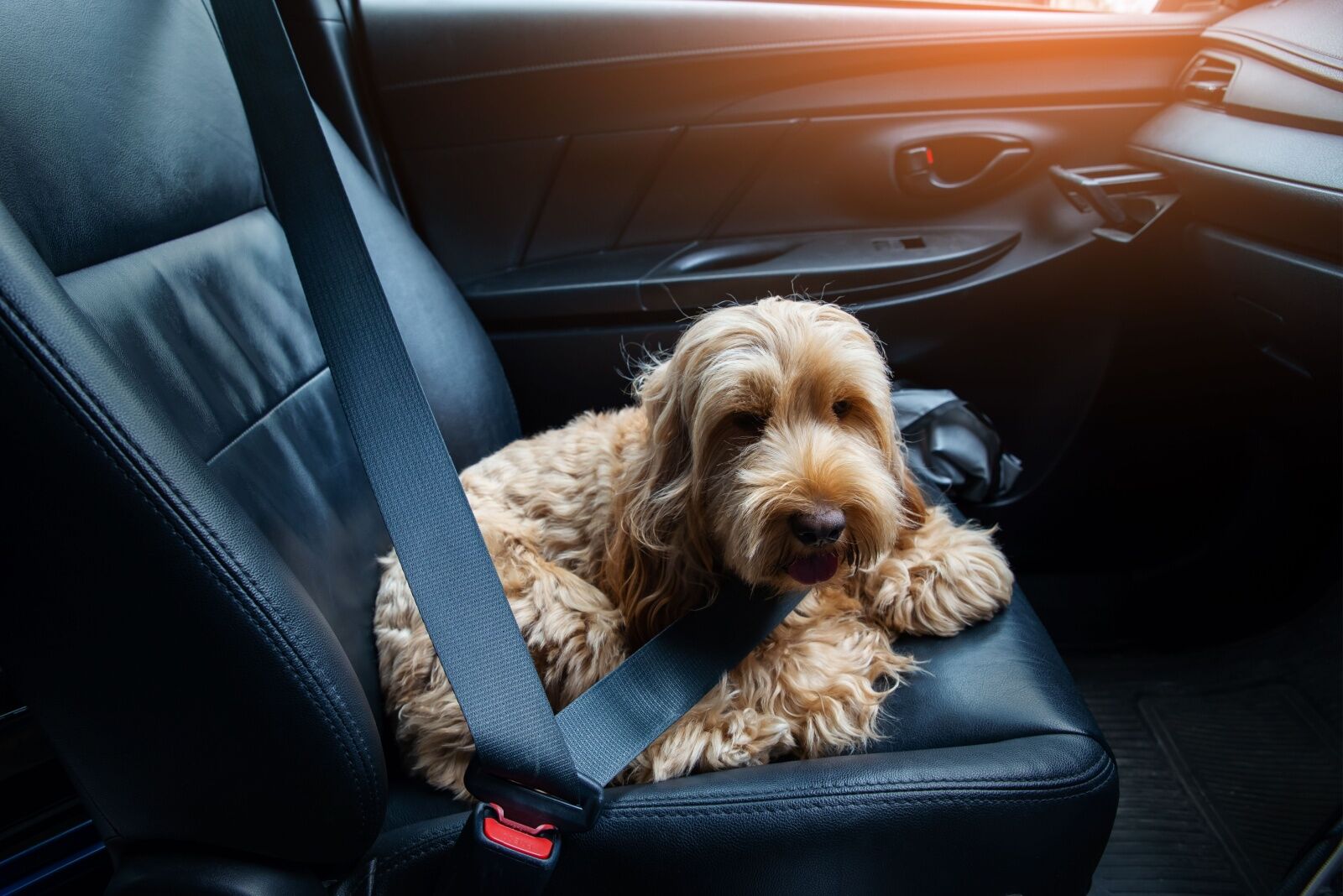According to a recent Pew Research study, 51 percent of people think their pets are not just part of the family, but also say they love them as much as the human members of their families. And when you narrow it down to two-person households with no kids — as my husband and I happily have — that number skyrockets, with 65 percent of people saying they love their pets as much as human members of their family.


Your Dog Should Be Wearing a Seatbelt on Road Trips. Here's Why
When it comes to my dog, I can say I not only love him as much as a human, but may potentially love him even more than some people love their kids (hey, we’ve all seen exasperated parents with screaming kids). We snuggle together in the evenings on the couch, he sleeps right next to me in the bed, and the thought of spending more than a few days away from him is heartbreaking. Usually, he refuses to even go for a walk without both his family members. (Yes, he’s spoiled).

Best friends forever. Photo: Suzie Dundas
That’s why when my husband and I take a road trip, we take our dog with us. We often make the long drive between our home in Northern California to southern British Columbia, and naturally, our pup comes along. But one thing that always stuns me when I talk to my friends is how few of them secure their dogs in their cars in any way whatsoever.
If we love our dogs as much as our family members, why are we risking their lives in cars? I would never let my elderly mother or a niece or nephew ride in the car without a seatbelt, so why do so many people skip using dog seatbelts?
For our road trips, our dog is secured with a dog seatbelt for every mile of the trip, whether he likes it or not. Truthfully, he’d rather sit on my lap the whole way. The “dog seatbelt” is actually a burly harness, with a device that keeps the actual seatbelt from retracting when fully extended. The fully extended human seatbelt weaves across the back of the dog safety harness, securing our dog in case of an unexpected impact or slide.

Our pup buckled up and ready to roll (and hugging his favorite stuffed whale). Photo: Suzie Dundas
According to the American Humane Society, an 80-pound dog can exert 2,400 pounds of force in a car accident that happens at just 30 mph. And having your dog hit your dashboard with 2,400 pounds of force would be horrific for both of you. Wearing dog seatbelts can make crashes less likely, too, as you’re less likely to be distracted by your pet while driving.
But having a seatbelt for your dog isn’t just about keeping them safe in case of an accident — it’s also about keeping them with you. Dogs can get easily lost during car crashes, either by jumping out of windows, getting thrown from the car, or jumping out when someone opens your door to see if you’re okay. Having your dog loose on the road is never a good thing, but it’s especially bad after a crash, as they may be injured and/or in shock and unaware of their surroundings.

So excited to go somewhere with his family that he can’t even keep his eyes open. Photo: Suzie Dundas
Sadly, a 2011 survey showed that only about 16 percent of people restrain their pets in cars. To help convince road trippers and their beloved best friends that dog seatbelts are an absolute must, I spoke with Lindsey A. Wolko, founder of the Center for Pet Safety. She gave me the scoop on why your dog should always be secured on drives (and explained why we shouldn’t call them “dog seatbelts.”)
This interview has been edited for length and clarity.
Matador Network: I find it a little obvious, but tell me why people should have dog seatbelts for their pups.
Lindsey A. Wolko: First, let me clarify that a seatbelt for a dog is typically an extension tether — something Center for Pet Safety does not recommend. Instead, we use the term safety harness. Additionally, there are crash-protection harnesses that can protect the human vehicle occupants and give the pet the best possible chance of survival in a crash.
Is there any data on what works better between a harness and a secured crate?
At this time, there is no data to define which product type is safer. We do know from the save reports that the brands receive that restraining or containing your pet in a quality product improves safety for all vehicle occupants.
Any tips for getting your dog to feel more comfortable in a safety harness?
Yes! Acclimation training is critical when introducing your pet to a new travel product, like a harness, crate, or carrier. Make the process fun.
First, bring the product into your home. Toss in treats or toys and let the dog get acclimated to the product. With a harness, you will want to put it on the dog for short durations, and again, distract with fun things. Once acclimated, you can pretend you’re going somewhere and practice securing your pet — all while giving lots of positive reinforcement.
The next step is to go for short trips using the product, and increase the trip duration gradually.

This….uh…..won’t work. Photo: MT.PHOTOSTOCK/Shutterstock
What percentage of people who road trip with their dogs use seatbelts or harnesses?
It’s an elusive metric, but we’ve read 15-20 percent of pet owners contain or restrain their pets. The challenge here is that most pet owners use products that will not offer protection in a crash.
Any advice on selecting a dog seat belt?
We recommend pet owners source a Center for Pet Safety Certified product to travel with their pets. We are a non-profit, working on behalf of pet owners. Our independent certification program helps pet owners identify the safest products on the market.
Where to buy a dog safety harness
I asked Wolko if she had any advice on selecting a dog safety harness, and I was happy to learn the one I’ve been using — the SleepyPod Clickit Terrain Safety Dog Harness — had been independently tested and certified by Wolko’s organization. There are even videos showing various testing excursuses in progress. Fair warning: They may make your heart skip a beat when you watch them.
What to look for in a dog safety harness
If there’s ever been a time to make sure you do your research, it’s when buying a car safety device for your dog. Be sure to search for crash test results of any harness you’re thinking about buying, and only buy one that connects to the back of a harness — never, ever connect your dog to your car by his or her collar.
Online pet superstore Chewy.com has a handful of options, and some reliable outdoor brands also make dog safety harnesses. Most come in multiple sizes and it’s very important to get it correct, since a secure fit is essential to your dog’s safety. Popular canine-focused brands like RuffWear and Kurgo make dog safety harnesses, and no one will be surprised to learn that dog-loving car brand Subaru makes one specifically for Subaru vehicles.
I’m not a vet or safety expert, and I can’t recommend one dog seatbelt or safety harness that will work for every dog out there. That’s why it’s important to thoroughly research your options and get the proper fit for your pup. Your dog is probably never happier than when they’re on an adventure with you, smelling new smells, frolicking in sun, and spending time with their people. Don’t let that magical day for your dog turn into a sad one.
As one of my favorite goofy TV shows (Bob’s Burgers) puts it: